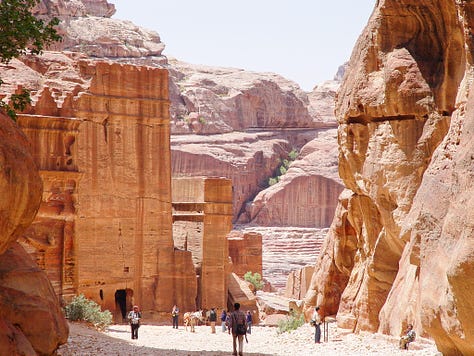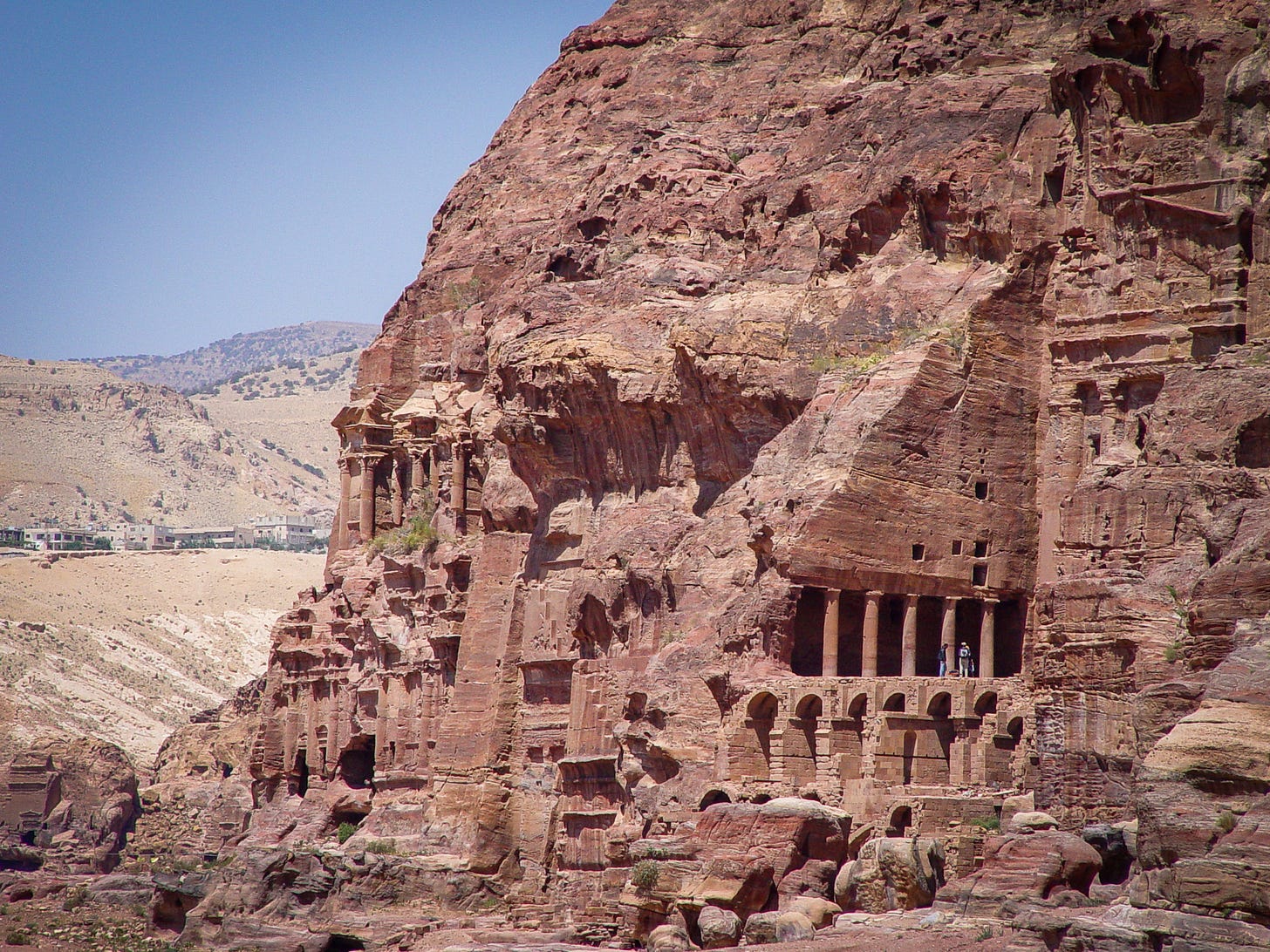Agatha Christie's Mystery, "Appointment with Death," Never Solved the Greater Mystery of Petra
The real mystery is what happened to the Nabataeans who built and abandoned Petra? No one knows. Planet Earth is full of history mysteries. This is just one of them.
Agatha Christie's Appointment with Death is a 1938 novel and play that features the Nabataean city of Petra, in the country of Jordan, as a main setting.
“Among the towering red cliffs of Petra, like some monstrous swollen Buddha, sat the corpse of Mrs Boynton. A tiny puncture mark on her wrist was the only sign of the fatal injection that had killed her,” reads the introduction to Christie’s mystery.
This is just one of many Agatha Christie mysteries. According to Britannica, “She wrote some 75 novels, including 66 detective novels and 14 short story collections. Christie is perhaps the world's most famous mystery writer and is one of the best-selling novelists of all time. Her works are reportedly outsold only by Shakespeare and the Bible.”
Wikipedia’s listing for Agatha Christie reports that her books have sold more than 2 billion copies making her the most bought and read novelist of all time. But even she, with all her inventiveness, did not and could not solve the mystery of the people who built the backdrop for the Petra murder mystery novel. Detective Hercule Poirot, Christie’s principal character, solved the murder mystery — his 19th Christie tryst — with typical efficiency. The Nabataeans are still an unsolved puzzle.
There is very little verifiable information about the Nabataeans. They are best known for their capital city, Petra, which is located in the sandstone cliffs of southern Jordan. The city was built using a hydraulic system that connected cisterns, springs, canals, and fountains to maintain fertile crops, gardens, and public pools. Today, Bedouins still use the cisterns that the Nabataeans dug. The Nabataeans may have originated in Mesopotamia and migrated west between the 6th and 4th centuries BC. They may have been a confederation of tribes that included Arabs, Arameans, Edomites, and others and were successful traders who controlled routes that moved spices and incense from Arabia to the Mediterranean Sea and Egypt. These peoples were experts at surviving in the desert, which helped them transport goods more efficiently than others. Somehow, no one knows why, the Nabataeans' influence faded and they were forgotten. The Romans claimed the Nabataean Kingdom in 106 CE and renamed it Arabia Petrea. The Nabataeans likely left Petra sometime during the fourth century CE, but the why remains a mystery that is unlikely to be solved. They didn't leave any literary texts or records, so it's difficult to pinpoint what happened to them. One theory is that they returned to the desert life they loved.
However, despite the mystery, they left an amazing and beautiful architectural wonder. And, it is the same today as it was when Hercule Poirot performed his incredible intellectual feats to solve the Appointment With Death mystery challenge “imposed on him” by Agatha Christie.1






















The Treasury in Petra is also world-famous as the resting place for the Holy Grail in Indiana Jones and the Last Crusade.










